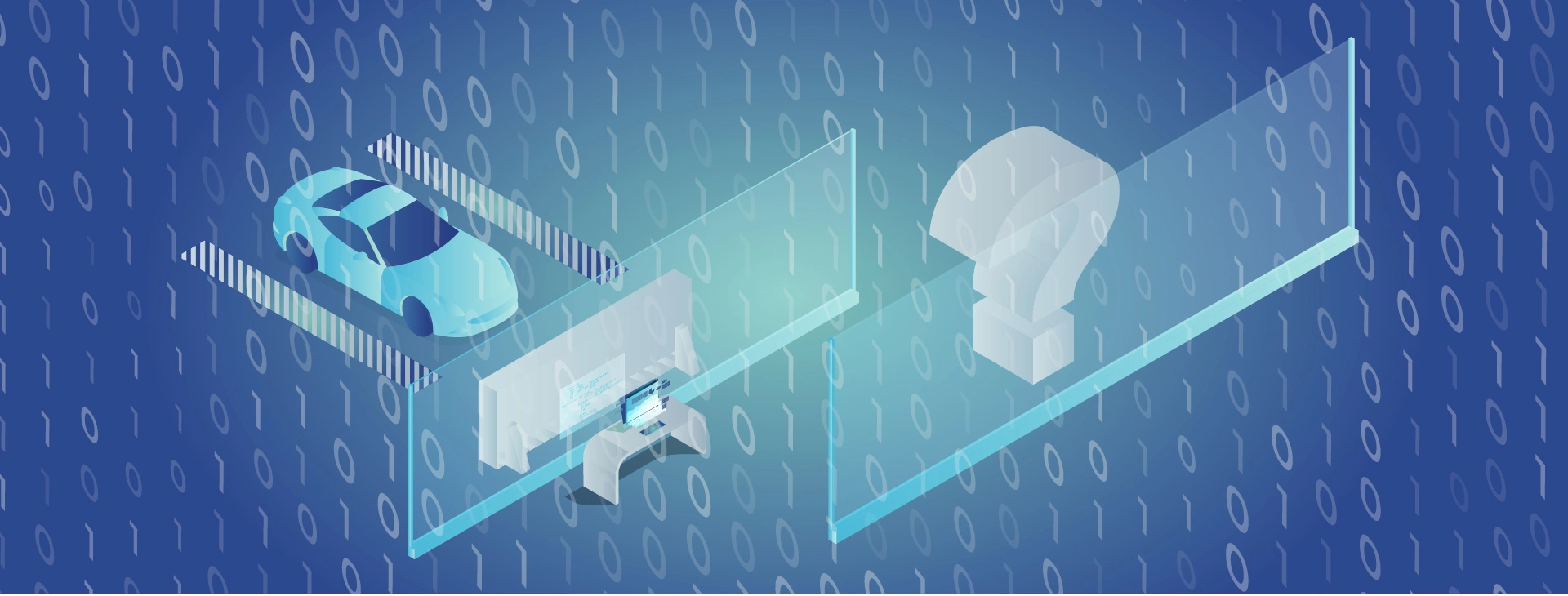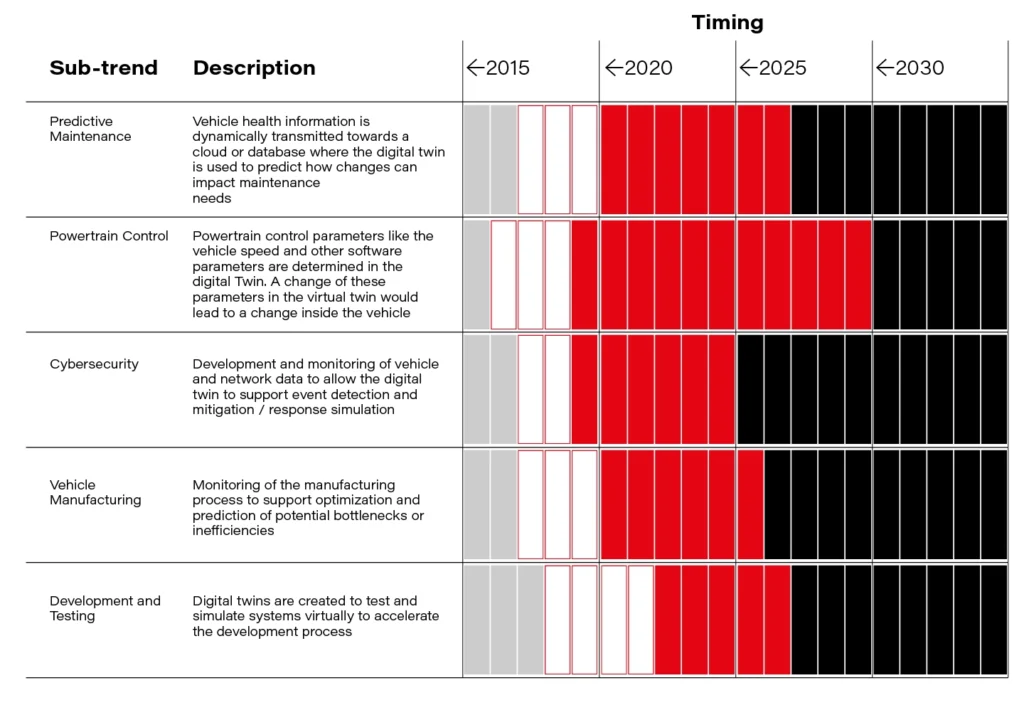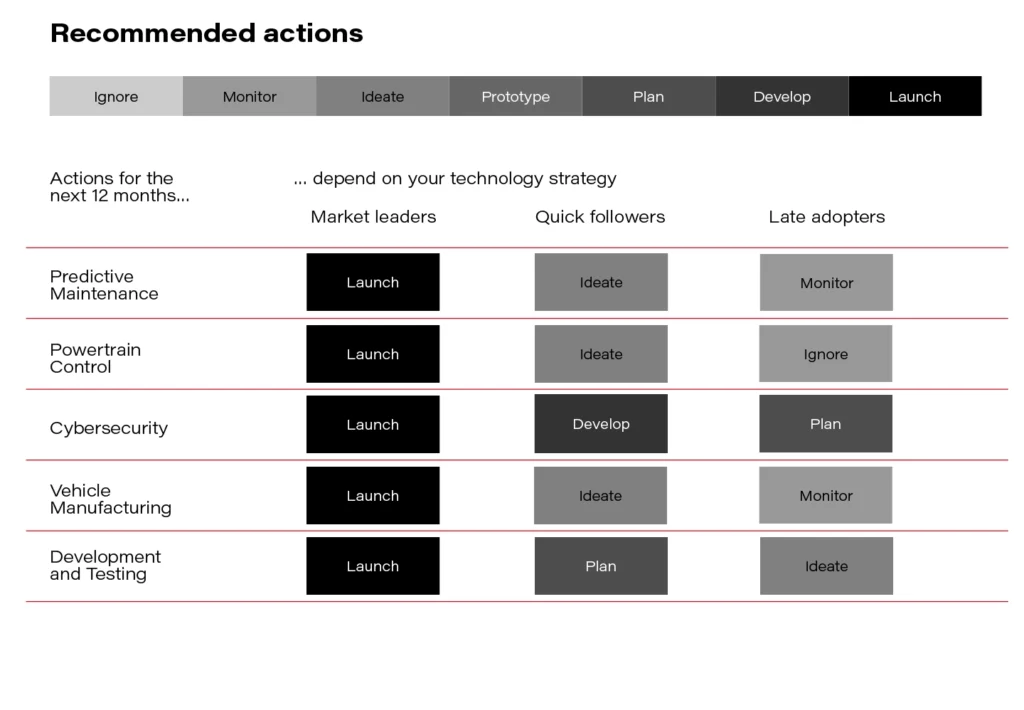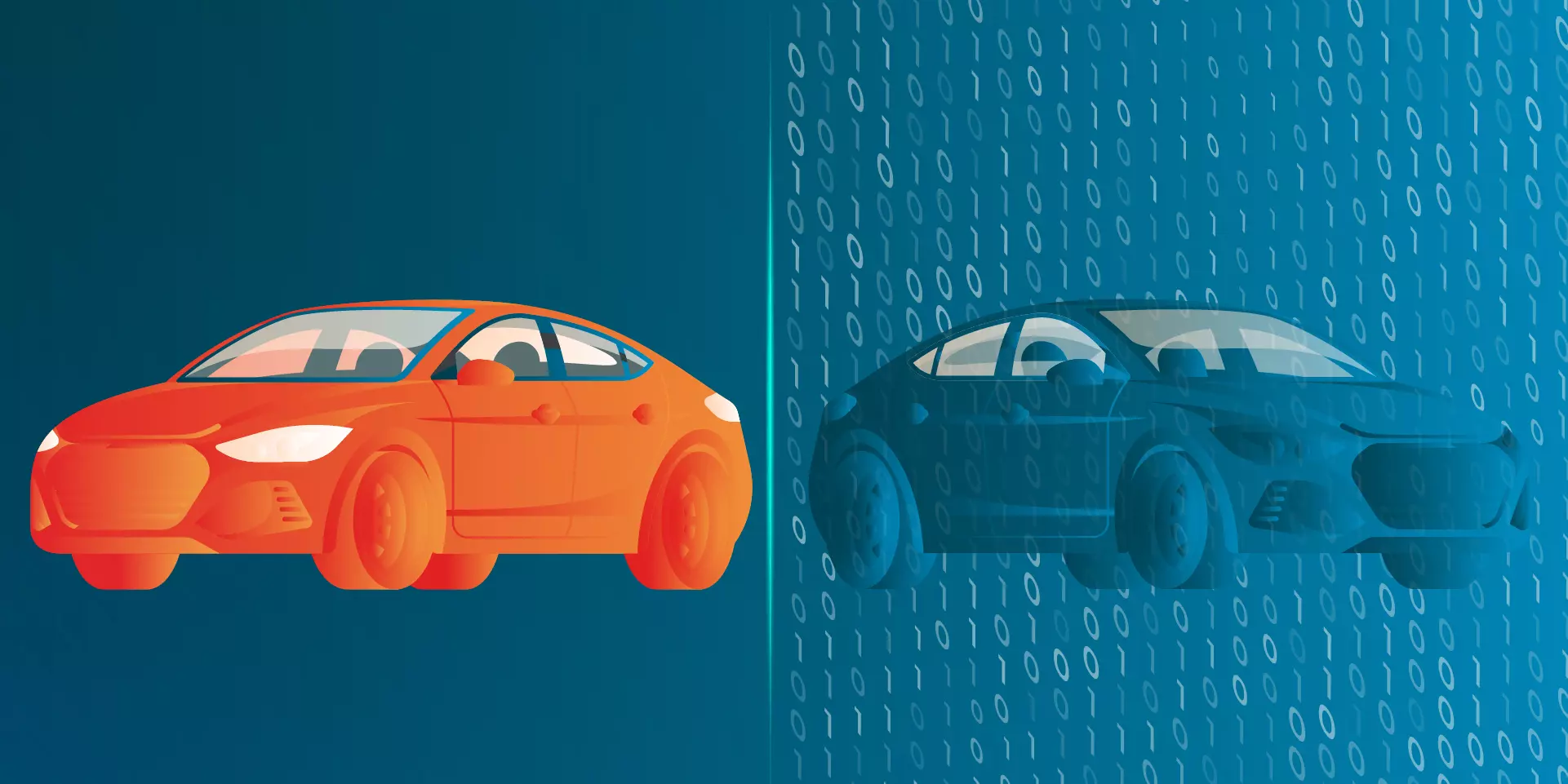What’s Next for the Digital Twin

Digital twins, or virtual copies of material objects, are being used in various types of simulations and the automotive industry is tapping into the potential offered by this technology. Representatives of this market can comprehensively monitor equipment and systems and prevent numerous failures. But what does the future hold for Digital Twin solutions, and who will play the leading role in their development in the years ahead?
The concept of Digital Twin today
To get started, let’s have a few words of reminder. A virtual model called a digital twin is based on data from an actual physical object, equipped with special sensors. The collected information allows to the creation of a simulation of the object’s behavior in the real world, while testing takes place in virtual space.
The concept of Digital Twins is developing by leaps and bounds, with its origins dating back to 2003. For many years, more components have been added to this technology. Currently, we distinguish the following:
- digital (virtual) aspect,
- physical object,
- the connection between the two,
- data,
- services.
The last two were added to the classification by experts only in recent years. This was triggered by developments such as machine learning, Big Data, IoT, and cybersecurity technologies.
Capabilities of digital twins in automotive
Digital twins are excelling in many fields when it comes to working on high-tech cars, especially those connected to the network. Below are selected areas of influence.
Designing the vehicle
3D modeling is a way of designing that has been around for many years in the widespread automotive manufacturing industry. But this one is not standing still, and the growing popularity of digital twins is proof of that. Digital replicas extend the concept of physical 3D modeling to virtual representations of software, interactive systems, and usage simulations. As such, they take the conceptual process to a higher level of sophistication.
Production stage
Design is not everything. In fact, the technology mentioned above also works well at the production stage. First and foremost, DT’s solutions facilitate control over advanced manufacturing techniques. Since virtual twins improve real-time monitoring and management of facilities, they support the construction of increasingly complex products.
Besides, the safety of the work itself during the production of cars and parts adds to the issue. By simulating manufacturing processes, digital twins contribute to the creation of appropriate employment conditions.
Advanced event prediction
Virtual copies have the ability to simulate the physical state of a vehicle and thus predict the future. Predictive maintenance in this case is based on such reliable data as temperature, route, engine condition, or driver behavior. This can be used to ensure optimal vehicle performance.
Aspects of cyber security
DT predicted for automotive software can help simulate the risk of data theft or other cybersecurity threats. The digital twin of the whole Datacenter can be created to simulate different attack vectors. Continuous software monitoring is also helpful in the early detection of vulnerabilities to hacking attacks (and more)
Development of security-improving systems
Virtual replicas of vehicles and the real world also enable the prediction of specific driving situations and potential vehicle responses. This is valuable knowledge that can be used, for example, to further develop ADAS systems such as electronic stability control and autonomous driving. This is all aimed at ensuring safer, faster, and more economical driving.
How will the digital twin trend evolve in the coming years?
One of the leading trend analysis companies from the automotive world has developed its own prediction of the development of specific sub-trends within the scope of the digital twin. In this regard, the experts analyzed such areas of development as:
- Predictive Maintenance.
- Powertrain Control (e.g. vehicle speed and other software parameters).
- Cybersecurity.
- Vehicle Manufacturing.
- Development and Testing.
The analysis shows that all of the above issues will move into the mainstream in the third decade of the 21st century. On the other hand, some of them will develop at a slower pace in the years to come, while others will develop at a slightly higher rate.
Subtrend Powertrain Control will have a lot to say. As early as around 2025, we will see that basic control parameters will be defined and tested primarily in the digital twin.
To a lesser extent, but still, Development and Testing solutions will also be implemented. DTs will be created to simulate systems in such a way as to accelerate development processes. The same will be true in the area of Predictive Maintenance. Vehicle condition information will soon be sent in bulk to the cloud or database. There, a virtual copy will be used to predict how certain changes will affect maintenance needs.

Key players in DT development in automotive
The market is already witnessing the emergence of brands that will push (with varying intensity) DT technology in the broader automotive sector (cars, software, parts). Specifically standing out in this regard are:
- Tesla,
- BOSCH,
- SIEMENS,
- Porsche,
- Volkswagen,
- Continental.
Both OEMs and Suppliers will shift their focus to the Development and Testing area. The proportions are somewhat different in the case of Vehicle Manufacturing, as this slice of the pie tends to go to OEMs for the time being. However, it is possible that parts manufacturers will also get their share before long. On the other hand, without any doubt, the area of Cybersecurity already belongs to OEMs, and the percentage of such companies that use DT to improve cybersecurity is prevalent.
The digital twin and the future of automotive brands
The digital twin is a solution that helps address mature challenges specific to the entire modern automotive industry. It supports digitization processes and data-driven decision-making. Manufacturers can apply this technology at all stages of the production process, thus eliminating potential abnormalities.
In the upcoming years, we can expect DT-type applications to become more common, especially among OEMs.
So what are brands supposed to do if they want to secure a significant position in a market where the DM trend is becoming highly relevant? First, it’s a good idea if they collaborate with those driving change. Second, it’s worth adopting a specific strategy, as not every sub-trend needs to be addressed in every scenario. This is brilliantly illustrated in the SBD chart below. The authors of this chart recommend certain behaviors, breaking them down into specific categories and relating them to specific market participants.

Based on this overview, it’s good to see that the leaders don’t have too much choice, and over the next 12 months, they should be releasing solutions that fall into every sub-trend. The issue of cyber security is becoming essential as well. The digital twins have great potential in developing it, so basically all stakeholders should focus on this area.
Do you want to introduce a digital twin in your company or talk about the opportunities this technology will provide you? Write to us and get support from AI and IoT experts with automotive backgrounds.

Check related articles
Read our blog and stay informed about the industry's latest trends and solutions.
see all articles






